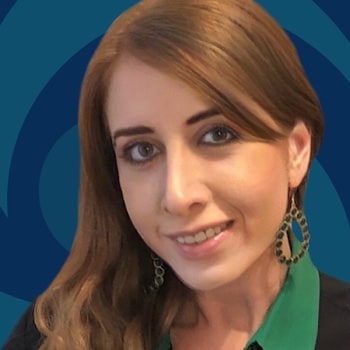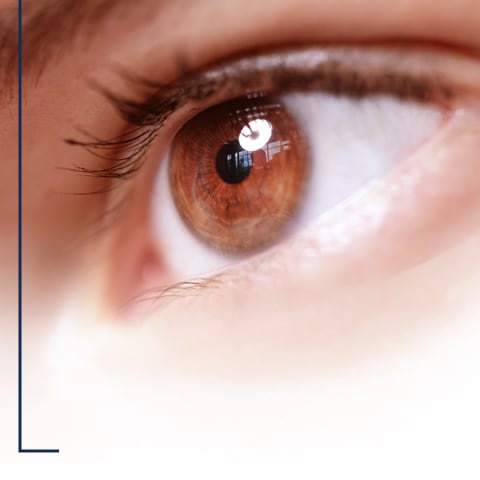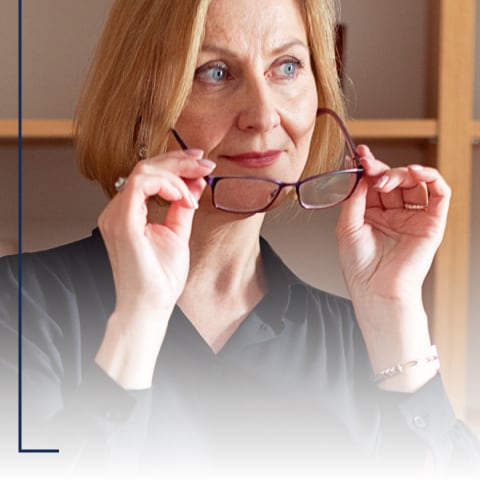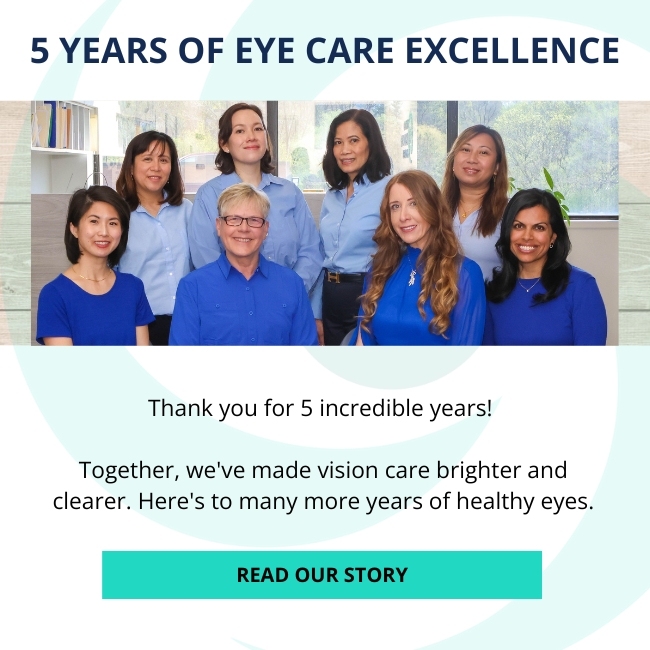I was 12 years old, squinting to read while in school, and not realizing I couldn’t see well because of a vision issue. My aunt, picking me up from school that day, peered into the classroom window, and noticed me squinting and holding papers close to my face. She then insisted on a trip to the eye doctor. Apprehensive and unsure about needing to wear glasses, this visit to the eye doctor worried me.
That same trip was the spark that brought me to where I am today and motivated me to pursue a career as an eye doctor. Although I was young, the doctor treated me as an equal and involved me in my own care, providing clear explanations for all of the tests, examinations, results and why I would need glasses. I remember feeling that I wanted to also help others in that same way. When I embarked on my optometry education, I recalled my earlier experience and made it a priority of mine to provide people with the same feeling of being involved in their care, understanding why and where their vision issues came from. That doctor that saw me as a young 12 year old may not know it – but his character, patience and empowerment helped shape me into the individual I am today. Being an eye doctor has become a part of my identity. It embodies many things I stand for: to care for others, to empathize and to empower patients to embrace their eye and overall health.
Of course, however, there were struggles during my journey. Throughout my academic career and beyond, there were individuals who questioned my ability to be accepted into an optometry program, to succeed once I was in, and to succeed even after I had completed my education. I have learnt to deal with this challenge over time, recognizing that there are always circumstances in which others may not support you, but at the end of the day, the most important person to support you, is you. I am proud to say that I persevered irrespective of these opinions, as I am now pursuing my passion.
This brings me to a key point: parental and caregiver guidance for developing children is extremely crucial. Children look to parents and elders as role models, and model their behaviors accordingly. Engaging children in conversations about what they enjoy, and talking with them can help to make them feel involved and discover their passions. Encouraging and facilitating their interests allows them to explore and grow.
When we think about the health of our children’s eyes, there are many considerations that I will outline.
- Disconnecting from electronic devices to give our eyes a break and help replenish our tear film. When we are on electronic devices, weblink half as often as normal. The mechanical action of the blink helps to secrete a specific fluid in our meibomian glands, thus in turn stabilizing our tear film. When we do not blink enough, the glands can become clogged and cause dry eye disease symptoms. Now, how do I tell my son he cannot be on his electronic devices for more than 30 minutes a day when I myself work well into the evening hours on these very same electronic devices? “Mom stop working” has become a staple phrase in my household. While I hope that a positive aspect of this is that my children can recognize the value of hard work in achieving one’s aspirations, I worry that I am not be setting the best example for work-life balance. I wonder, how am I to educate them on the dangers of electronic devices, when I do not take my own advice. After all, children have never quite followed a “do as I say, not as I do” mantra. This is why it is imperative for parents to reflect on their own actions, as children model their behaviour based on what they see their parents do. When we tell our children not to use their electronic devices, we must also disconnect and engage in other activities. This is something that I myself continue to work on.
- Alternating indoor activities with outdoor. I grew up in a household where if it was cold, we sheltered indoors. Now that I have kids of my own, I recognize the importance of embracing outdoor activity all year around. Our children’s eyeballs continue to grow until late adolescence and early adulthood. The more ‘near work’ the eyes do, the more the muscles of the eyes change and flex in order to bring a clear image to the brain. In eyeballs that are still growing, excessive ‘near work’ can cause the length of the eyeball to grow faster than the average individual. Experts have indicated that the prevalence of myopia (nearsightedness) is increasing at an alarming rate, with certain regions seeing myopia at epidemic proportions. A paper published in the journal Ophthalmology estimated that by the year 2050, 50% of the world will be nearsighted, and 10% are at risk of high myopia (severe nearsightedness).[1] This is alarming but preventable.
- Practice moderation when using electronic devices. It is not easy to say no to our children when many of their peers are being told ‘yes’. When my son was six, he asked for a cellphone as some of his other classmates had cellphones. It is often tempting to provide our children with what all the other children appear to have. While technology is here to stay and children need to learn how to use electronic devices, balance and moderation are key. There must be a balance between their overall health, and the knowledge of technology that is required in our present society. As discussed, excessive ‘near work’ and device use can alter the structure of the eye glands, and therefore moderating the amount of exposure is essential. As parents and caregivers, it is our role to guide our young children. Without this guidance, children may easily spend hours at a time on an electronic device, without fully understanding the implications on their future eye health.
Investing in our children’s eye health is a key part of investing in their overall development. When we arm our children with the right tools and knowledge from a young age, we are instilling healthy habits that will help them thrive throughout life, helping to raise healthy and well-balanced individuals.
[1] Holden et al. (2016). Global Prevalence of Myopia and High Myopia and Temporal Trends from 2000 through 2050. Opthalmology, 123(5), P1036-1042. doi: 10.1016/j.ophtha.2016.01.006










